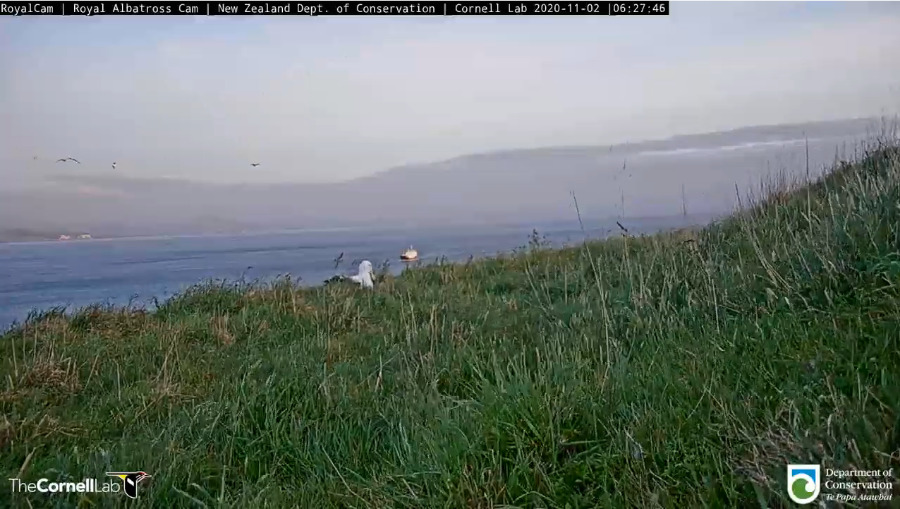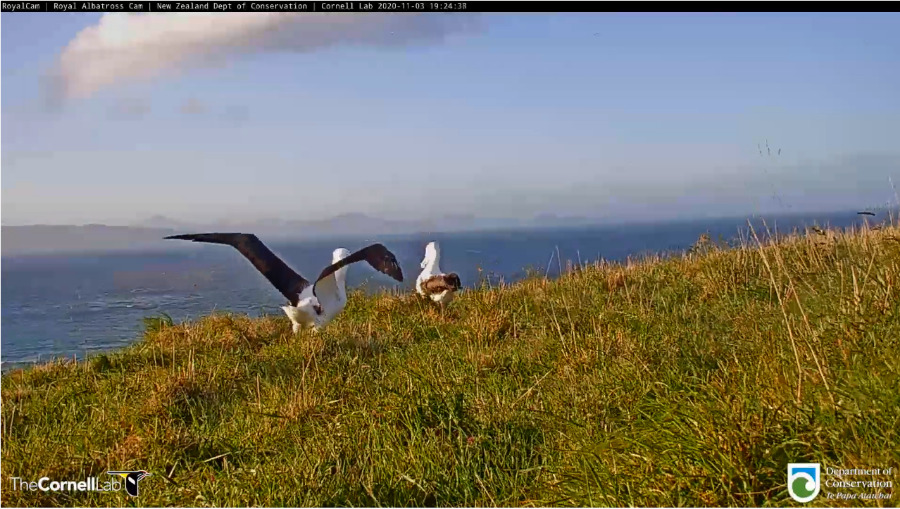Viens no albatrosiem pārsvarā uzturas krastā.

6.27
Izskatās,ka veido ligzdu.(Būtu ļoti jauki,ja kameras redzamības zonā kāds iekārtotos pamatīgāk.)

6.43









Šerina Broni (Ranger, DOC)Sharyn Broni (Ranger, DOC)
Kia ora koutou
We now have 5 eggs laid in the colony. This includes an egg by GL, LKL's mate. LKL has been seen in front of the cam recently being territorial with LGK and RLK. LKL will be busy incubating once he gets back so we are likely to see him a bit less from now on. Egg numbers are likely to double over the next couple of days.
The two pair LGK/LGL and RLK/GLG have now built reasonably substantial nests which are still hidden from the cam by long grass. We expect to see some more serious nest building by the females just prior to their egg laying time.
There are over 100 individual albatross that have been sighted so far in the colony.
 Nest Building, Mating & Funny Crash Landing 11.5.20
Nest Building, Mating & Funny Crash Landing 11.5.20Sharyn Broni (Ranger, DOC)Sharyn Broni (Ranger, DOC)
...As of November 6th we have 8 eggs and are expecting more soon.
Over 100 toroa/albatross individuals have returned back to Pukekura/Taiaroa


 11.7.20
11.7.20


Sharyn Broni (Ranger, DOC)Sharyn Broni (Ranger, DOC)
Both LGL and GLG have laid eggs, likely within 12 hours of each other. Changeovers are usually more frequent at the early stages of incubation.
Eggs are checked and weighed on the first day as this allows a double check on fertility. A fertile egg will loose weight.
Daily checks on the identification of each albatross on each nest is carried out through the entire 79 day incubation process.
Eggs are around 400g at lay date and 300g at hatch date.



